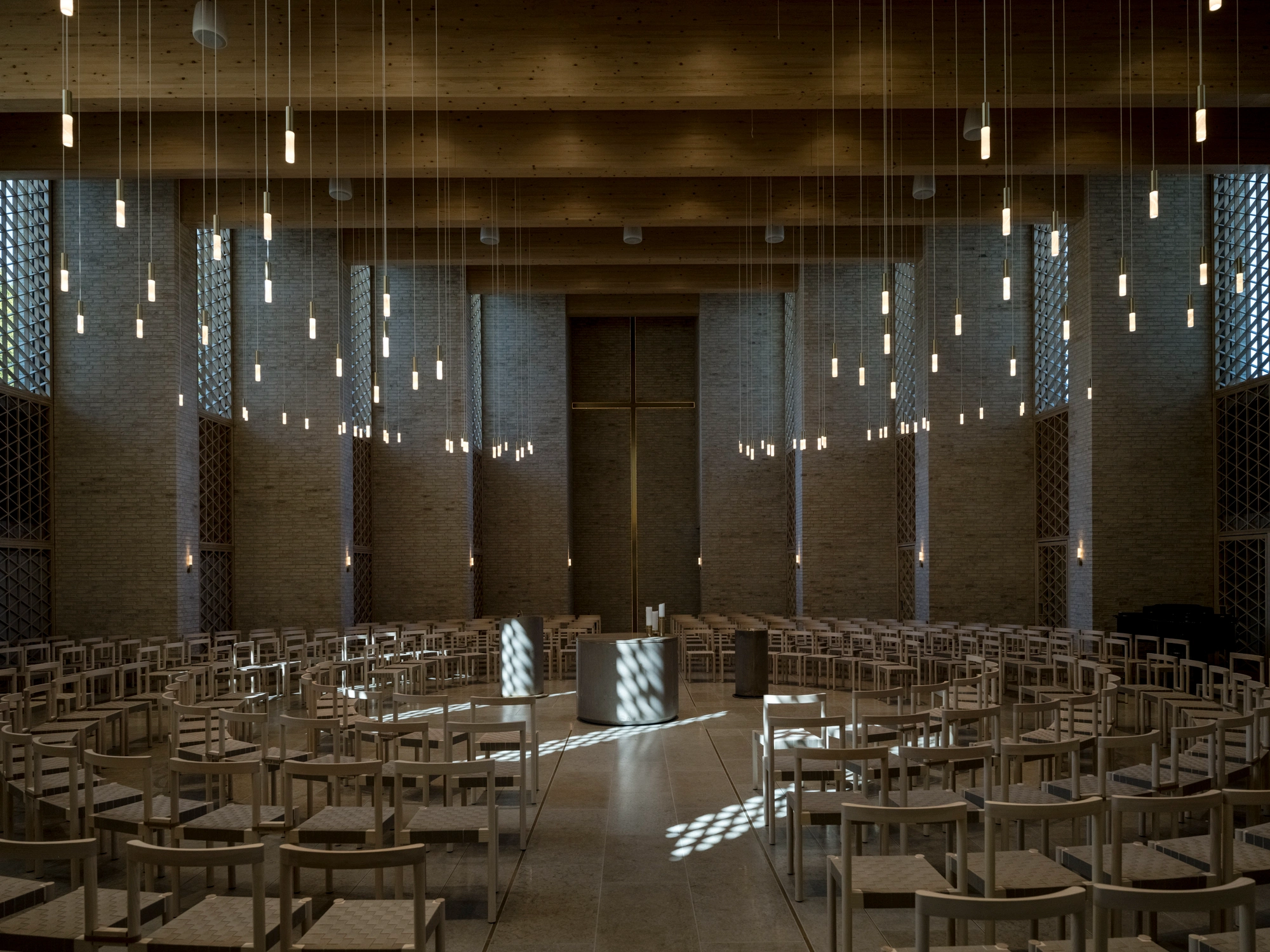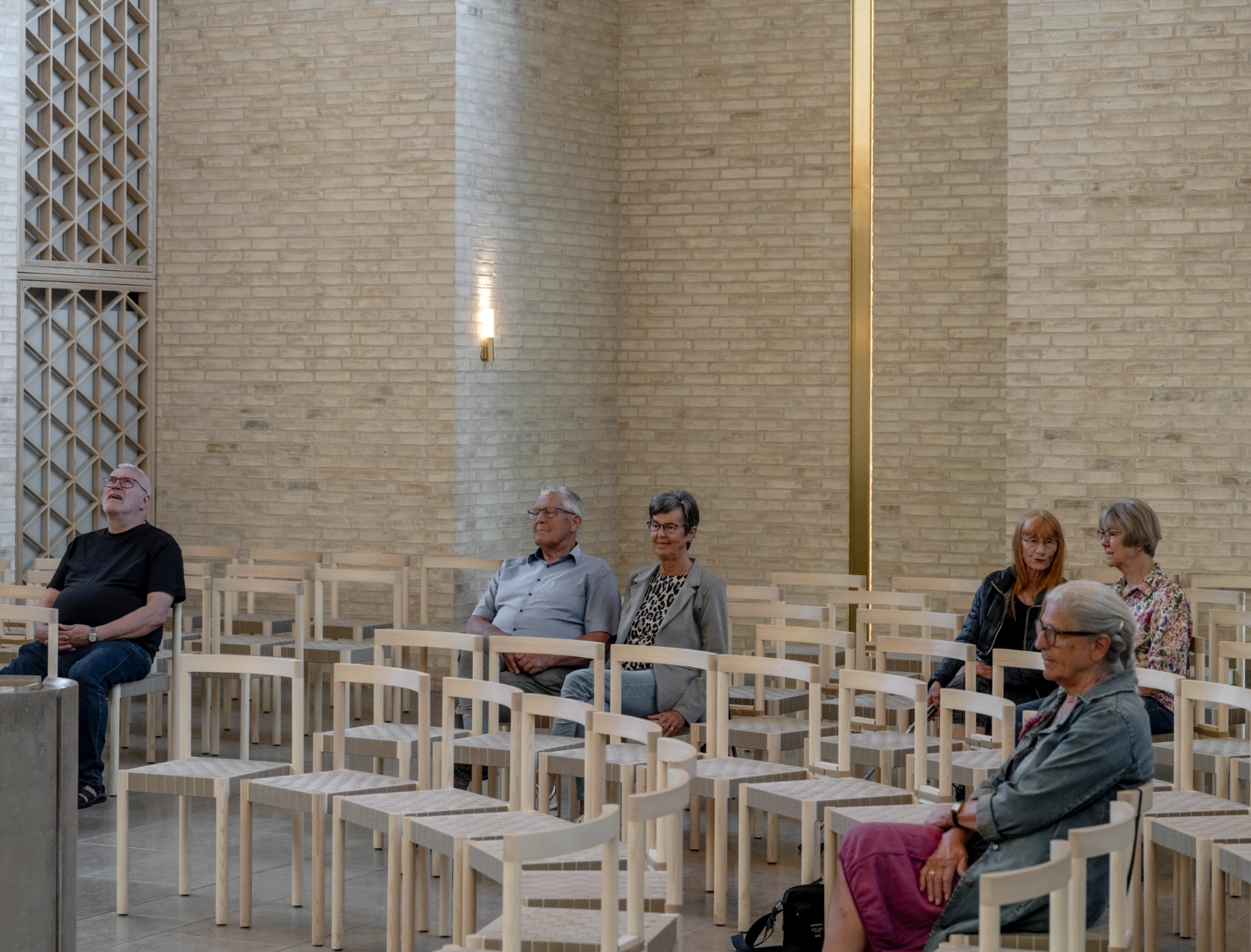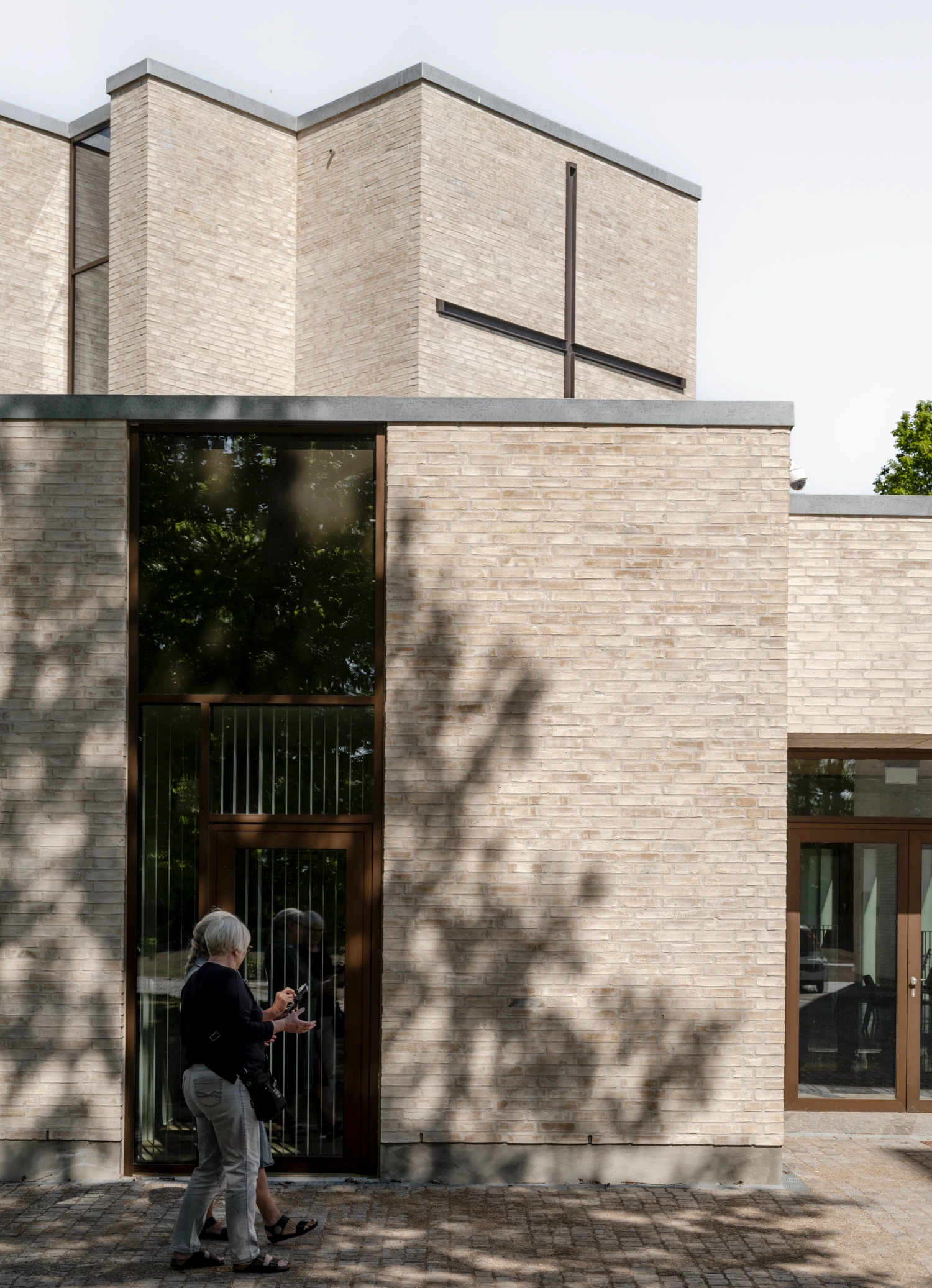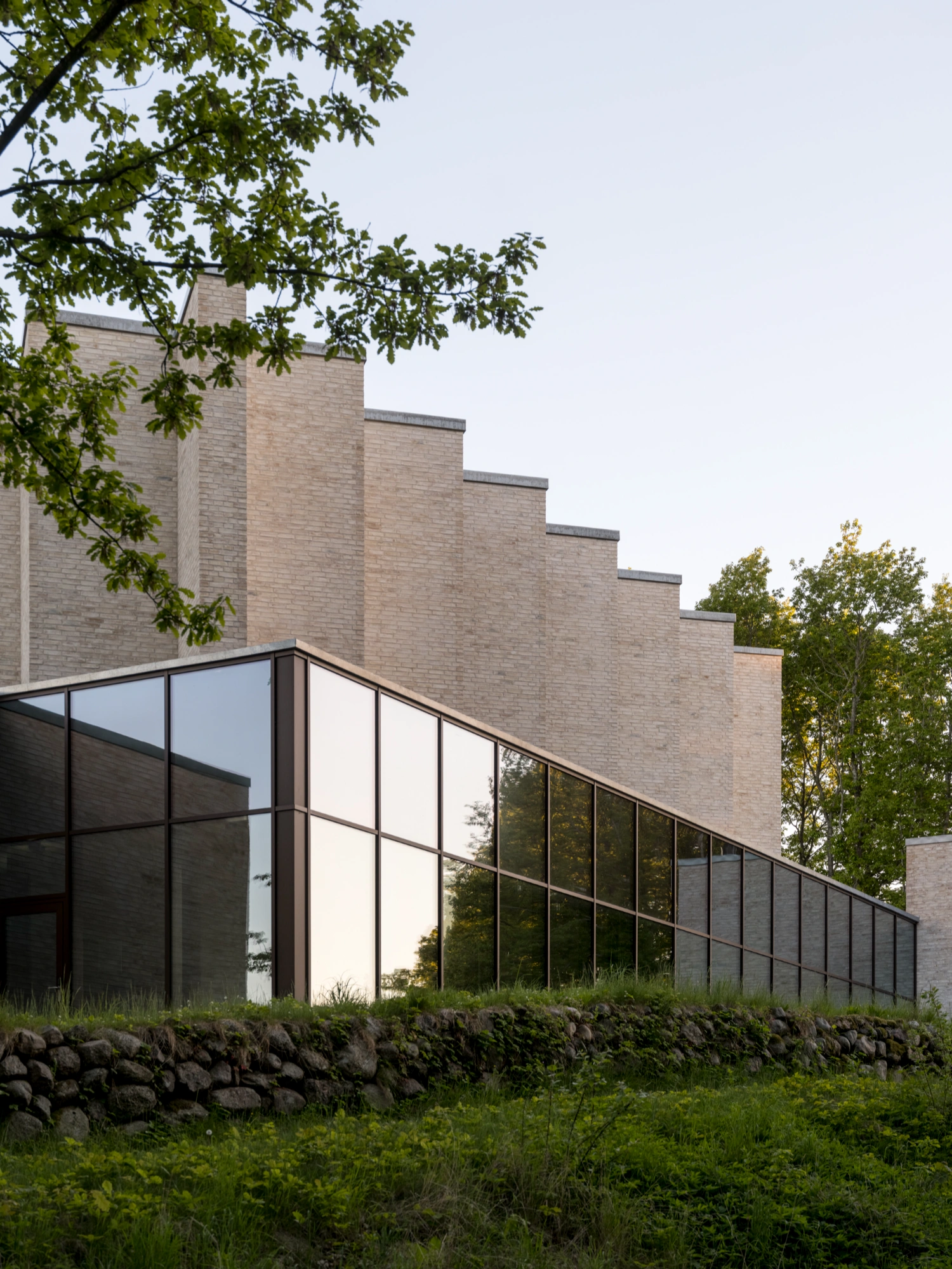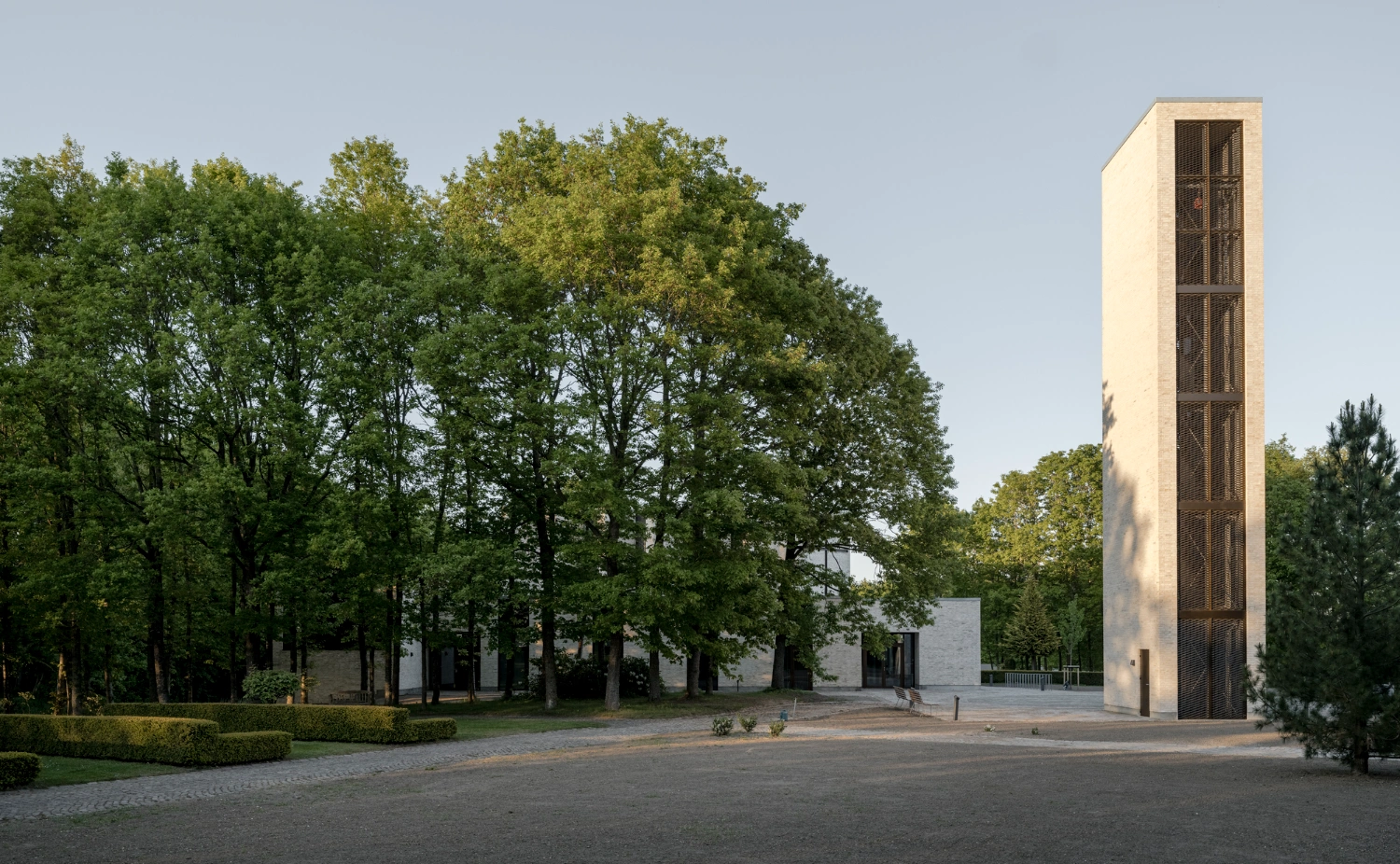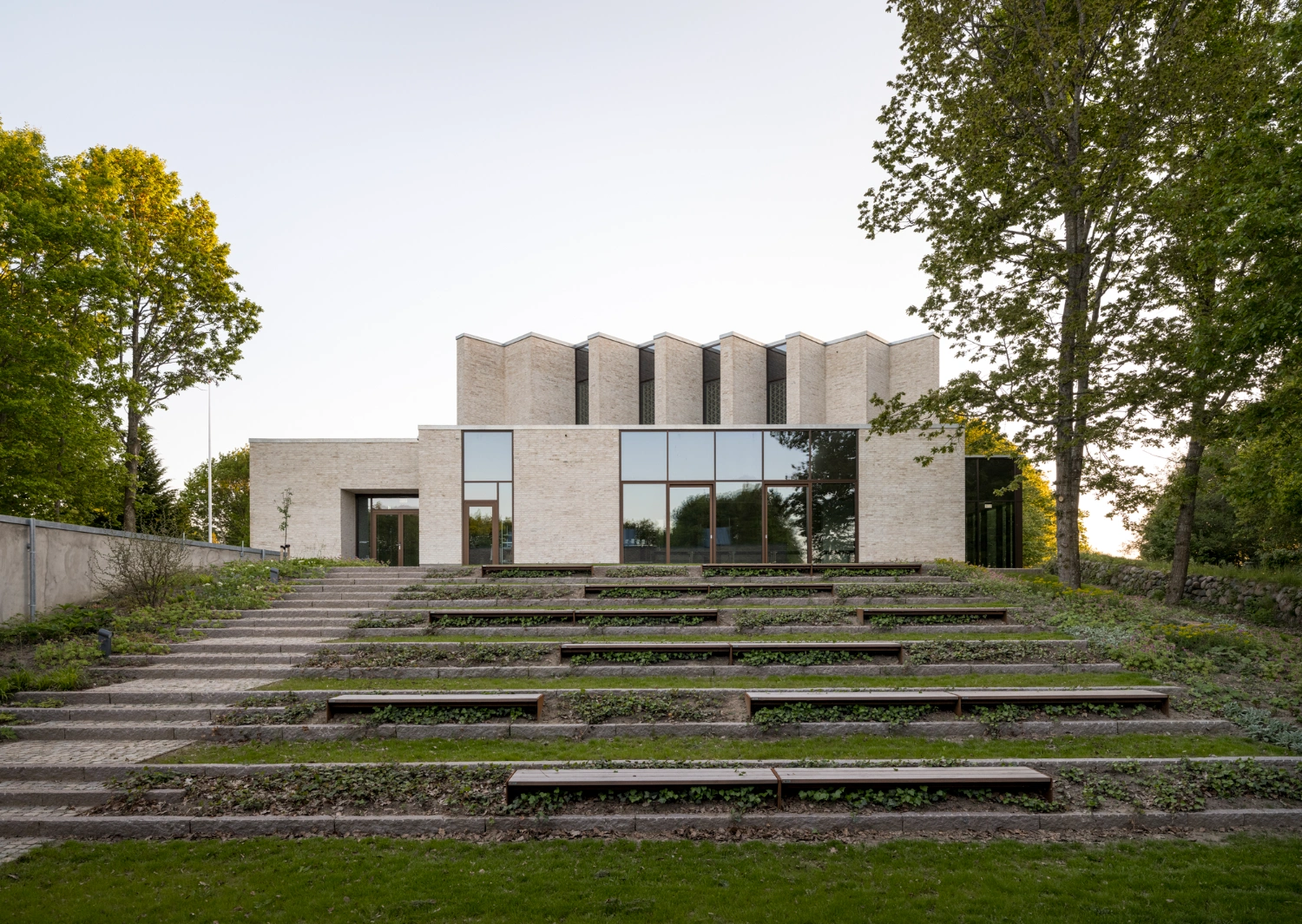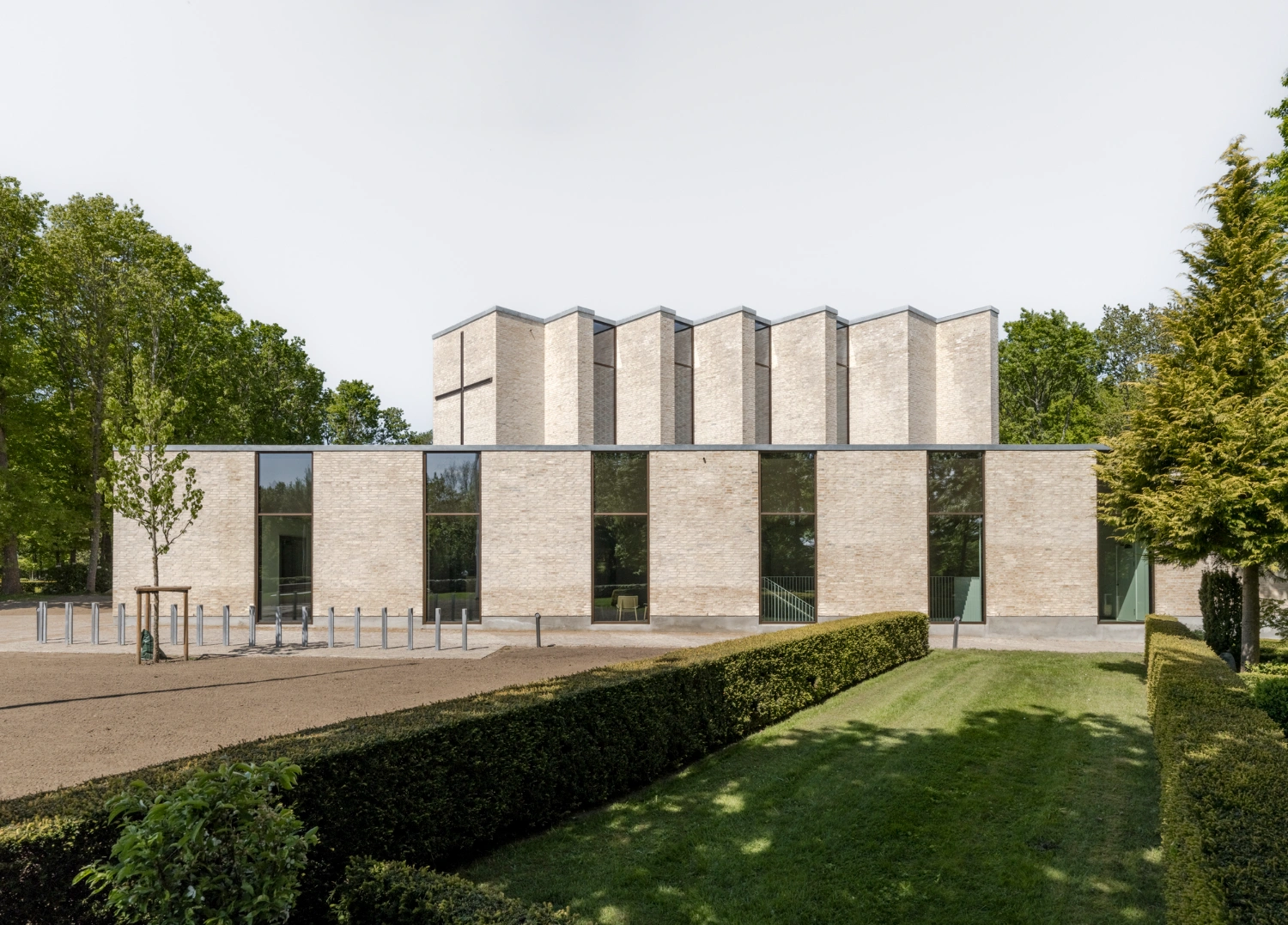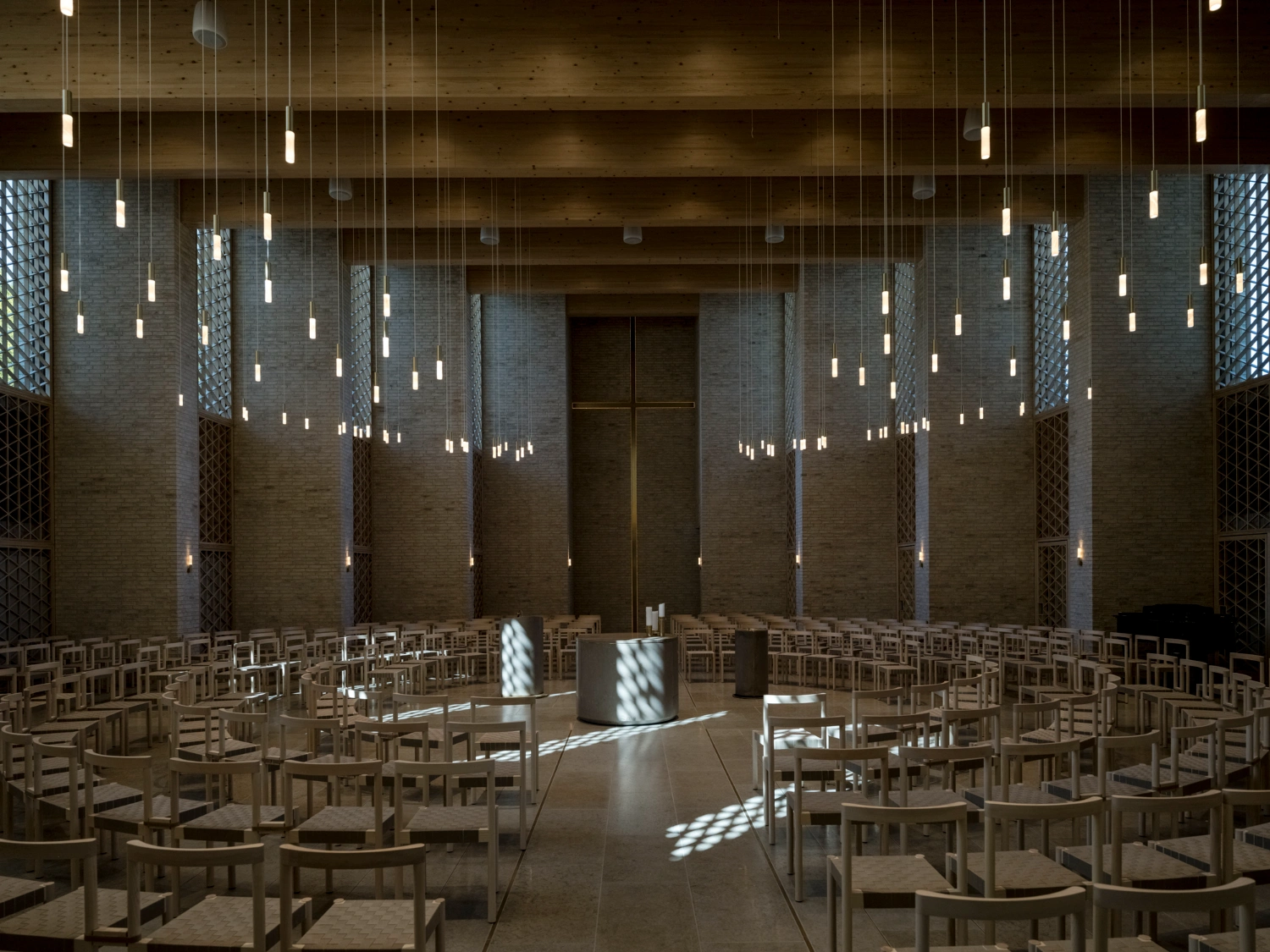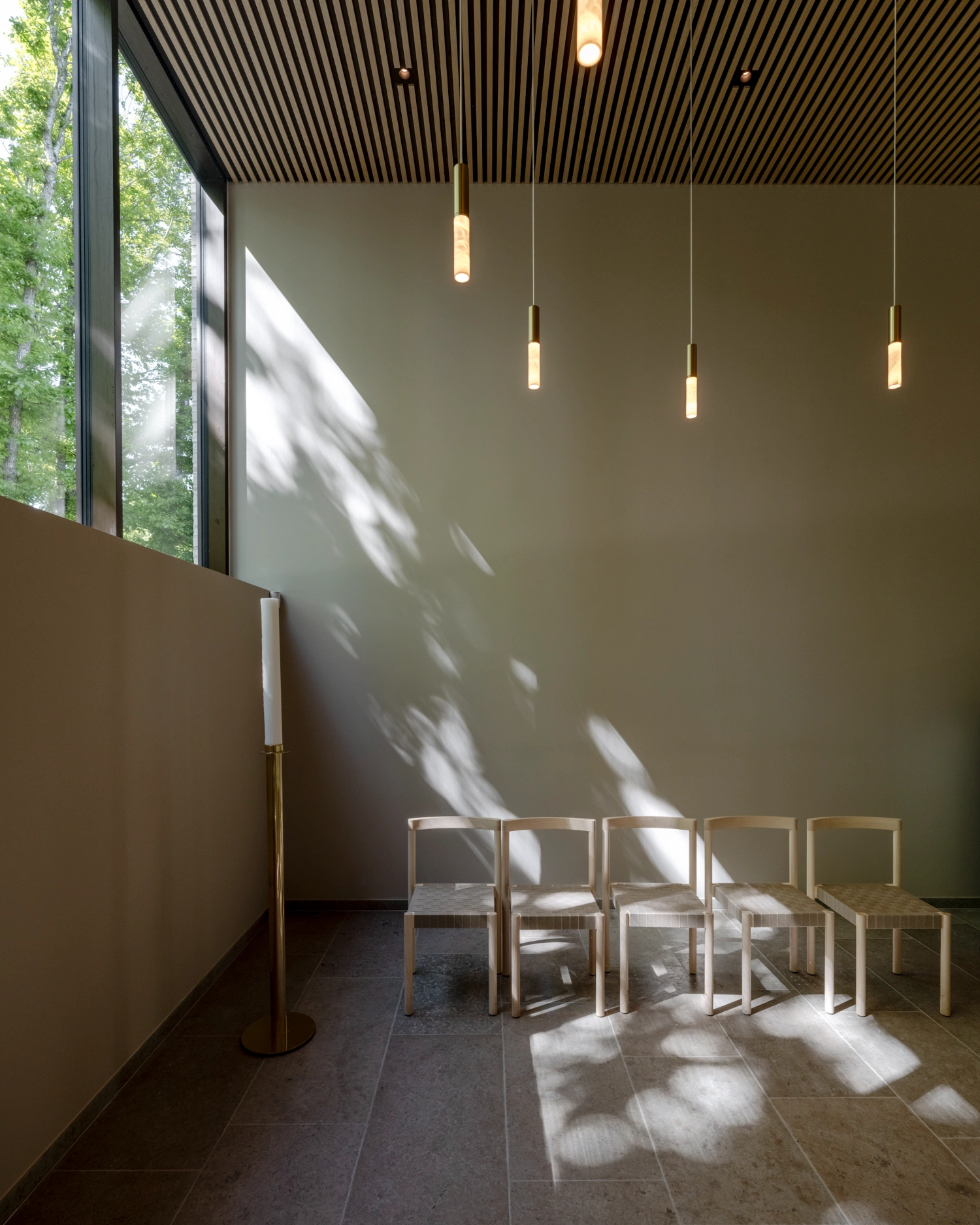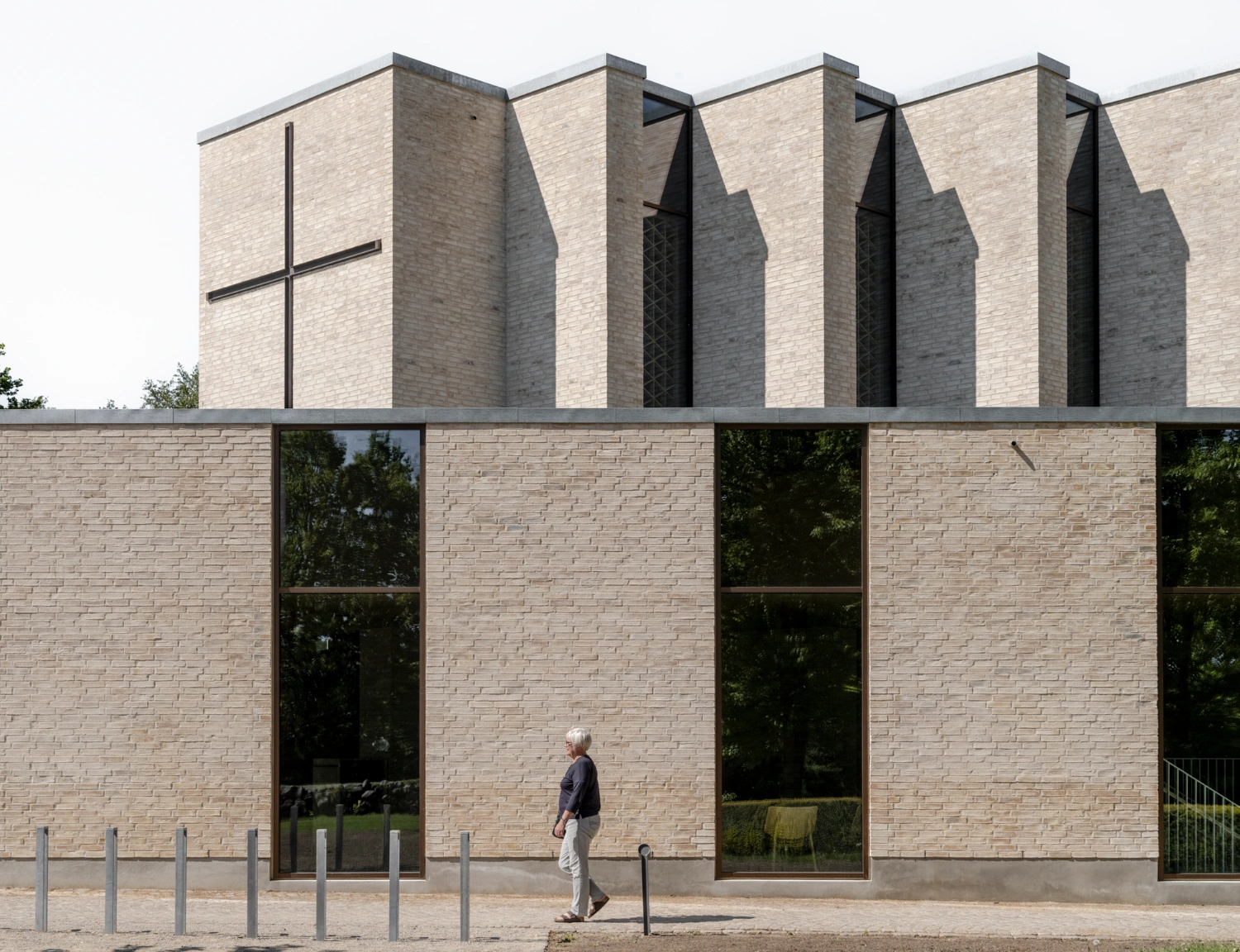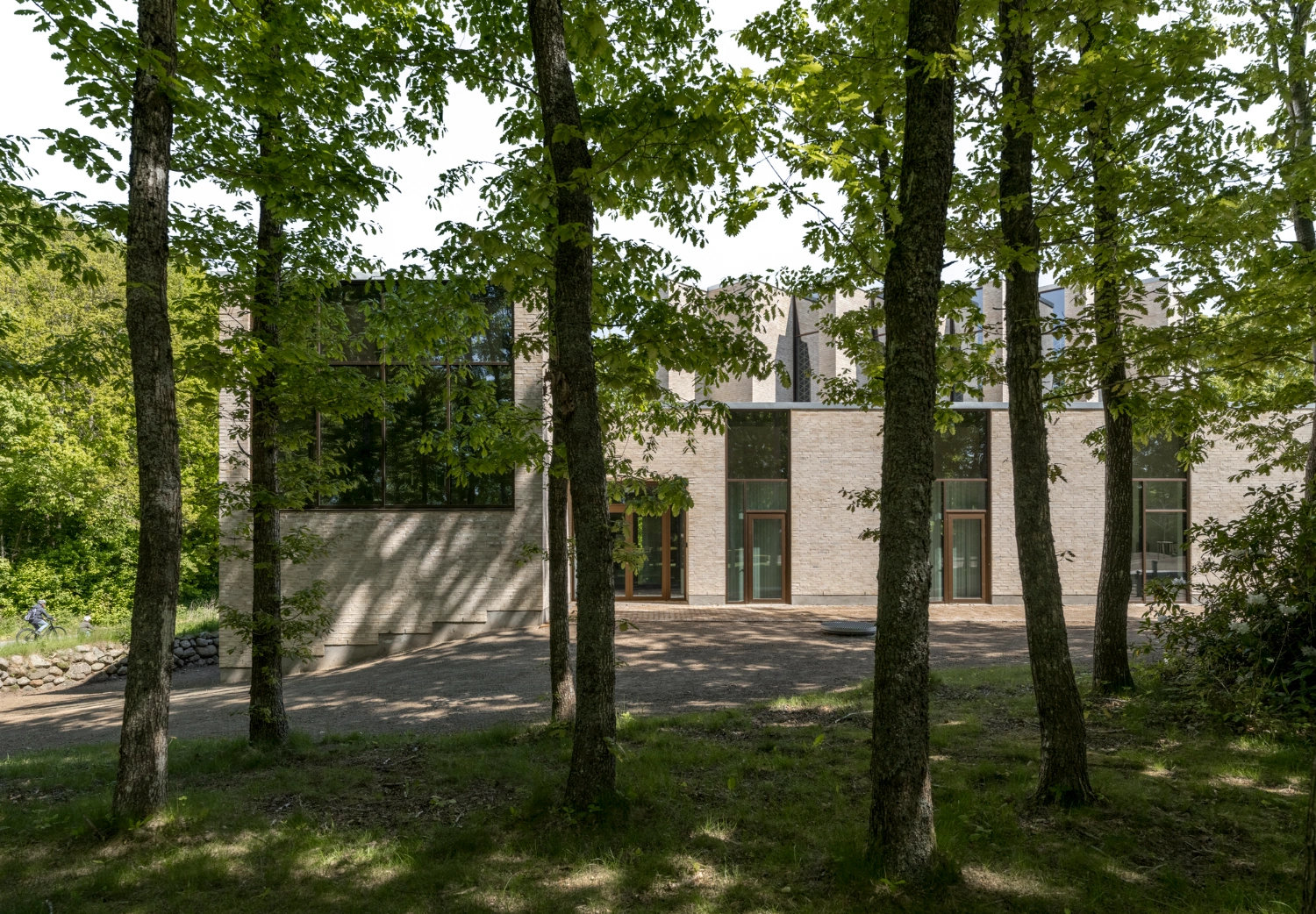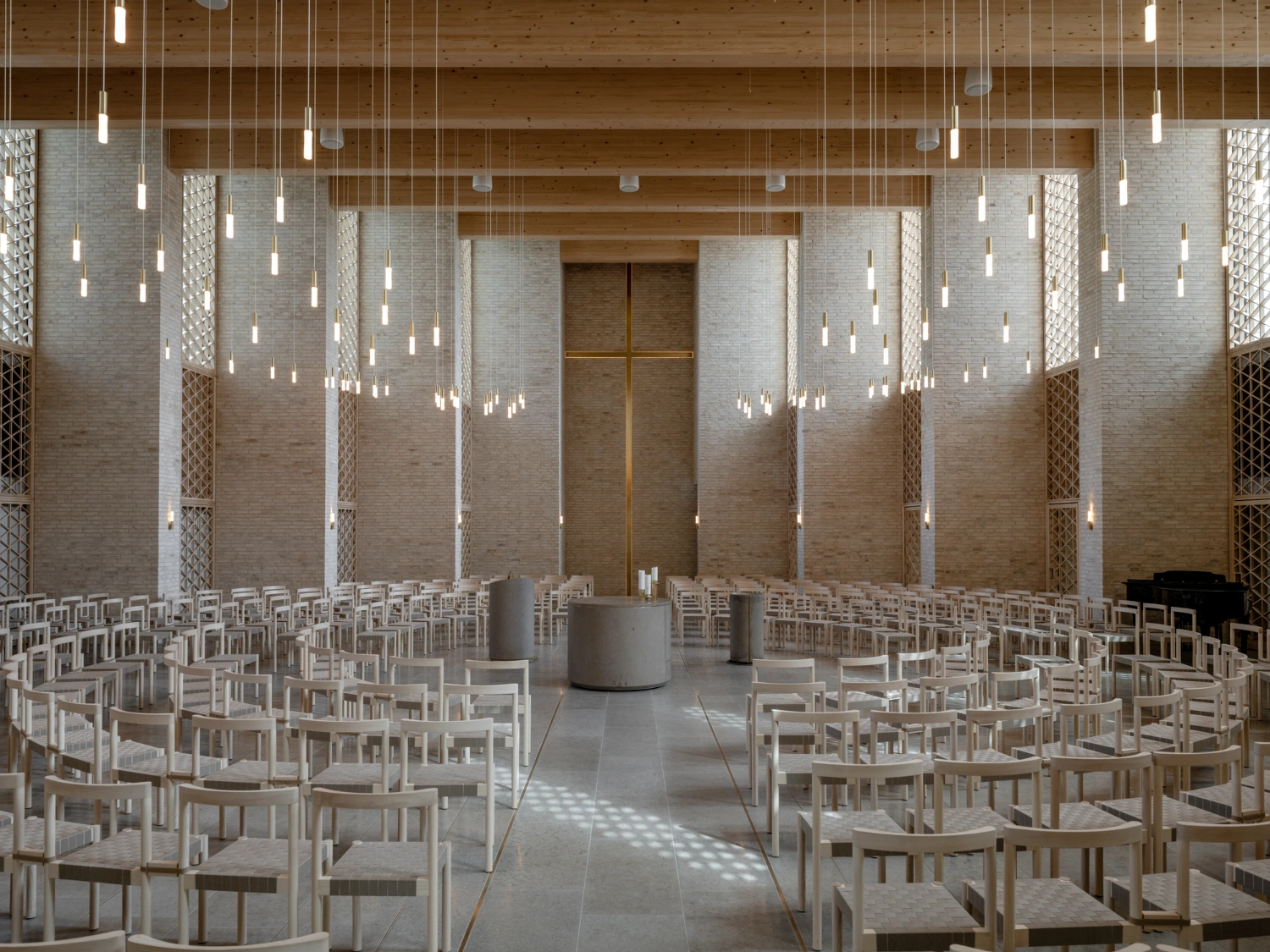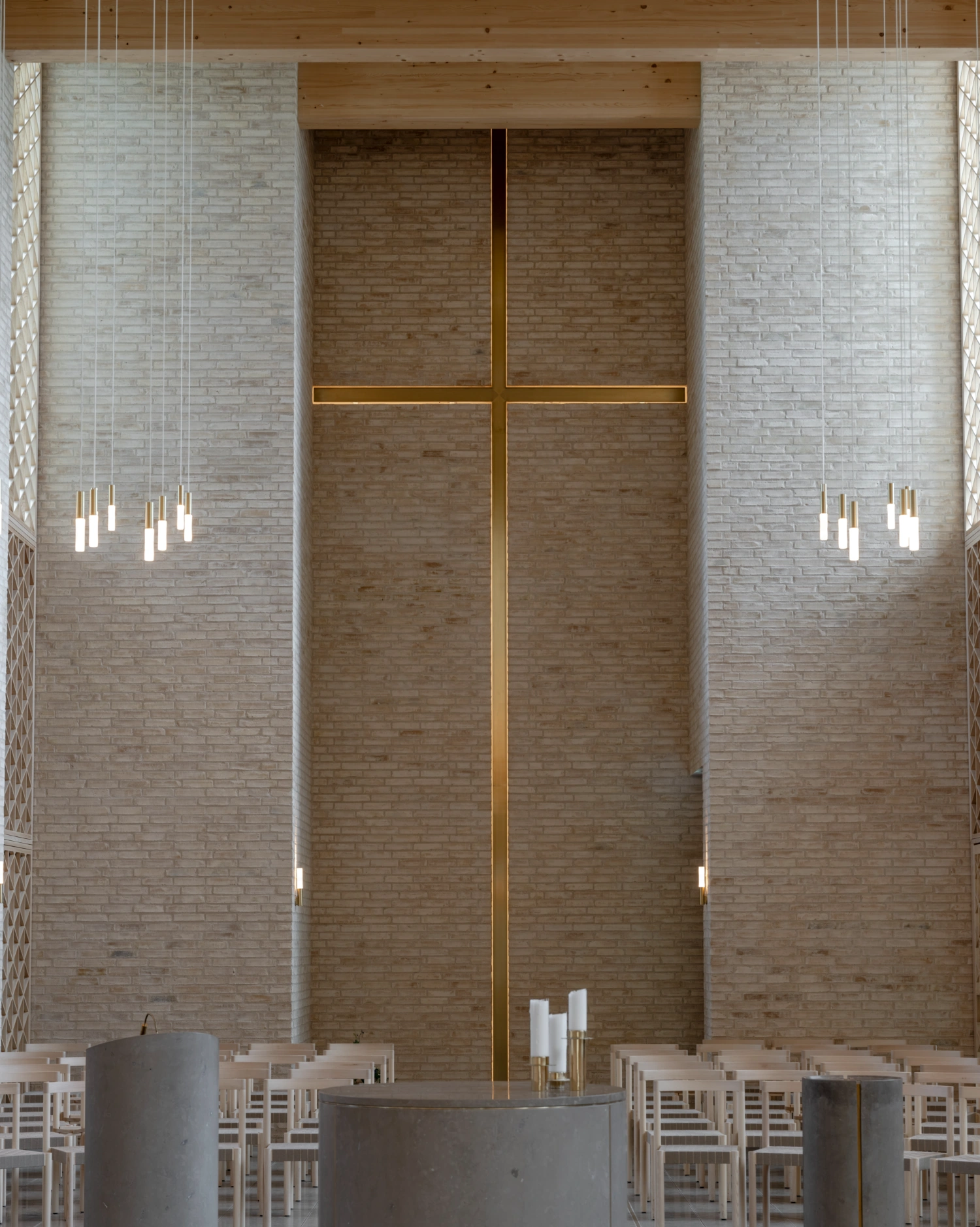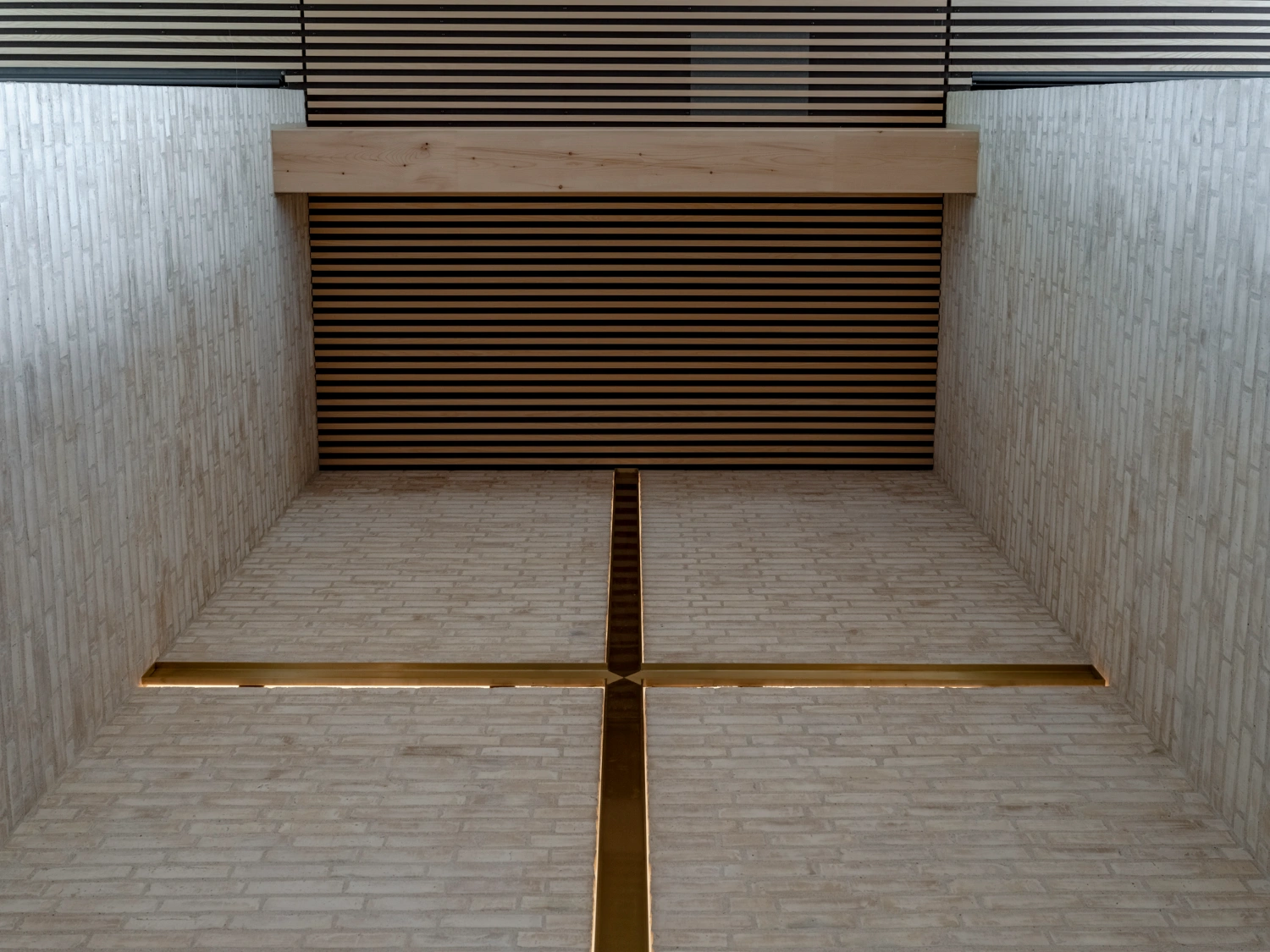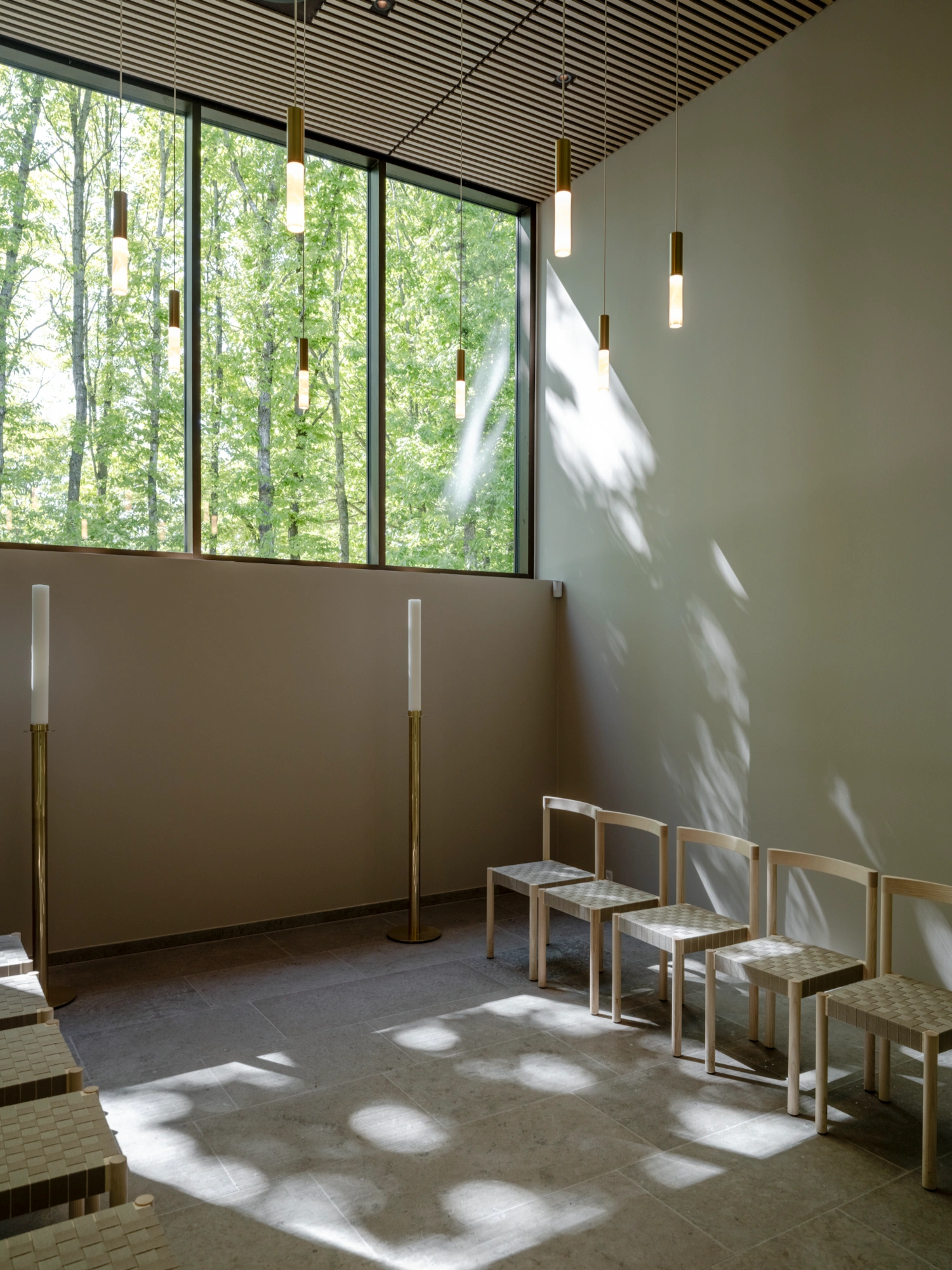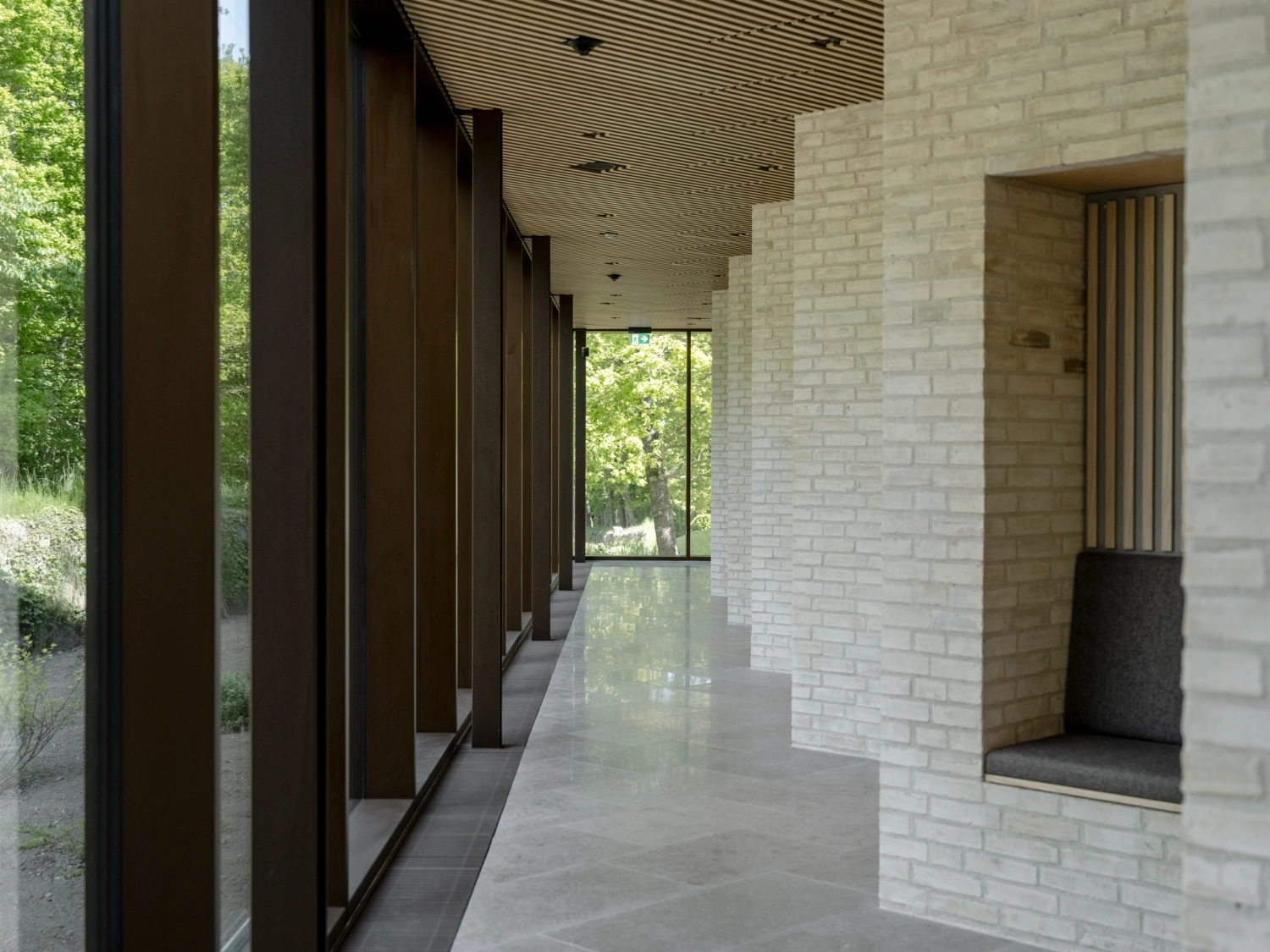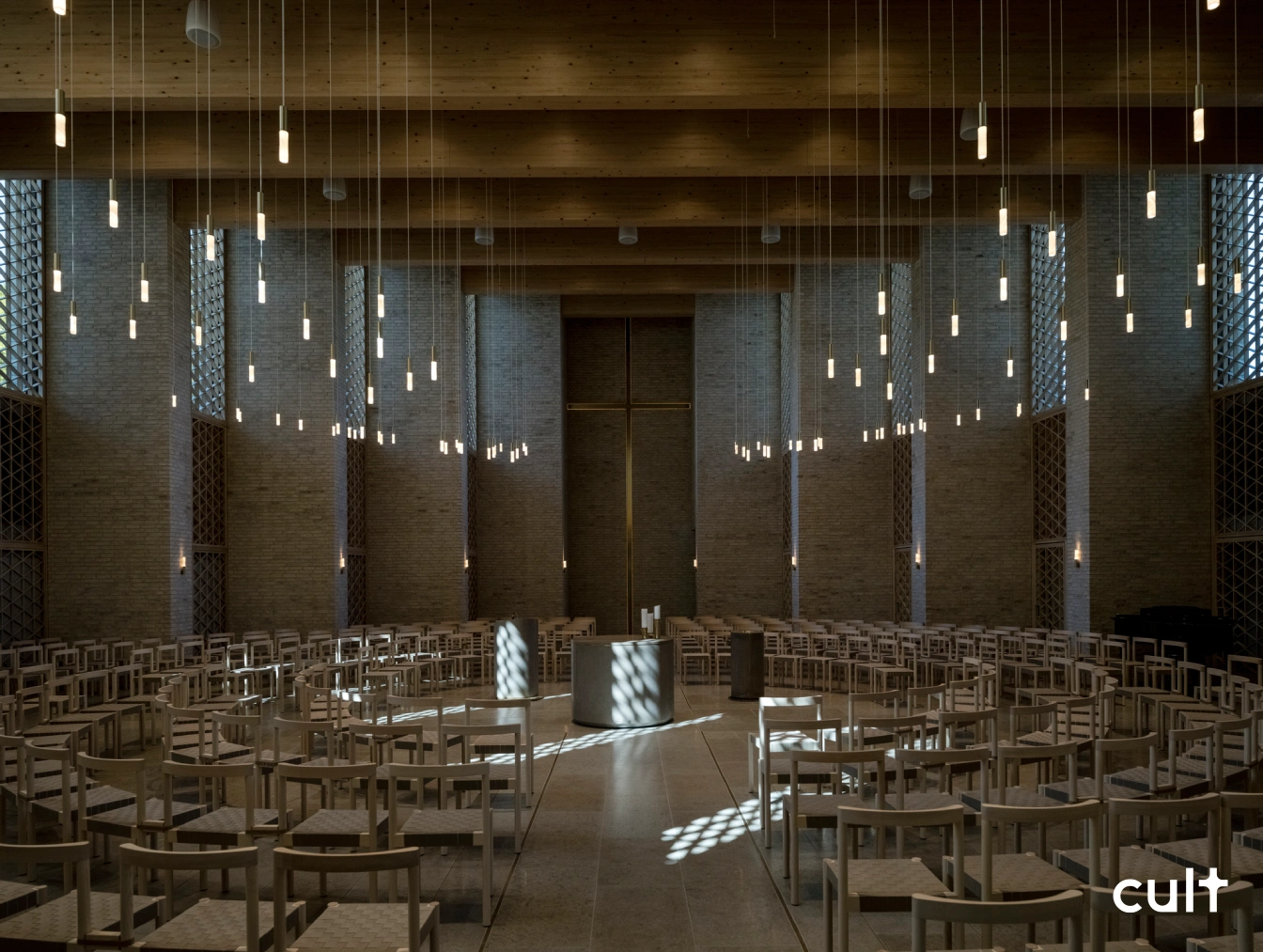The opening of a new church in 2025 sounds almost like an anachronism. In the age of post-Christian Europe, where faith is quietly archived in museums or rebranded through yoga mats and psychedelic retreats, building a church is nearly a radical gesture.
In Skanderborg, Denmark—a town better known for its festival than its clergy—the emergence of Højvangen Church, designed by Henning Larsen in collaboration with Espen Surnevik, insists on a future for the ecclesiastical. Not a revival, but a re-coding.
This is the first new church built in the Skanderborg Parish in over 500 years. Five centuries. Think about that temporality. When Greta Tiedje, Henning Larsen’s Global Design Director, says, “Our ambition was to design a space that opens in every direction,” it’s not just architectural—it’s ontological. Højvangen Church is less a building and more an interruption; a clearing in Denmark’s theological continuum. Not just for prayers, but for pauses.
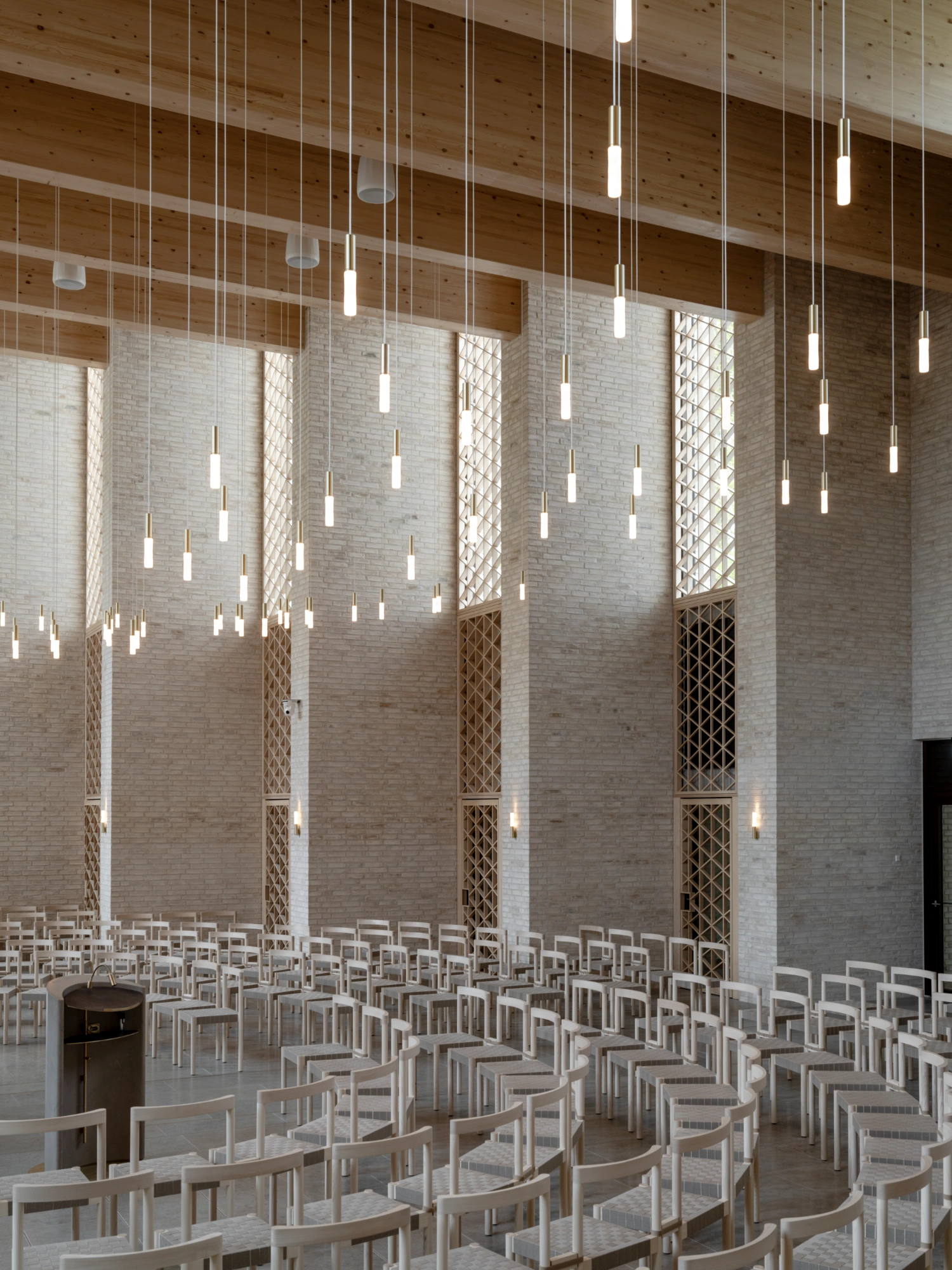
From the outside, the church presents itself with a deliberate restraint: a low, stacked procession of pale brick volumes edged by a sharply modernist rhythm. There is no spire. No stained glass. No triumphant verticality. Instead, there’s a horizon. And that’s telling. The structure folds itself into the landscape rather than rising above it, as if conscious of both its context and its time—a time when institutions must now ask permission to be meaningful.
Eva Ravnborg, director at Henning Larsen, frames it clearly: “We have been true to the theological tradition, while also reinterpreting the church as a place that accommodates both everyday life and celebrations, joy and mourning, across generations.” That sentence reveals the pivot. This isn’t a space insisting on God—it’s a space designed for human textures. For rituals without rigidity. For softness without sentimentality.
In that slight hesitation lives the new secular sublime: not transcendence, but transience. Not divinity, but dignity. And in that, Højvangen Church finds its relevance—not as a return to belief, but as an architecture for care.
Inside, the architecture becomes more atmospheric. The main nave is austere but not cold—an orchestration of oak, brick, and brass in neutral tones, where light operates like a third material. It doesn’t illuminate; it choreographs. Slivers of daylight fall through perforated lattice walls and cascade across the pale woven chairs like quiet gestures. A brutalist baptismal font, placed at the geometric center of the room, anchors the space not as a dogmatic monument, but as a kind of silent axis—spatially democratic, non-hierarchical, non-coercive.
And this is what’s radical here: the idea of a church that decentralizes authority. There is no pulpit thrust forward, no central aisle pointing to a divine judge. Instead, the space feels like an agora—symmetrical, civic, and somehow unspoken. It doesn’t tell you what to do; it waits for you to arrive.
The surrounding park, niches in the colonnade, and a bell tower stitched delicately into the forest canopy extend this ethos. Everything is permeable, transitional. From one angle, it looks like a monastery; from another, a cultural center. That ambiguity is the church’s strength. It avoids the trap of religious nostalgia while refusing to be a neutral, generic ‘event space.’

This project continues Henning Larsen’s legacy of theological reimagination—seen previously in Ørestad and Enghøj—but Højvangen goes further. It questions the very premise of sacred architecture. What is sacred in a society that no longer believes, but still mourns, still gathers, still craves the presence of others in silence?
The answer, perhaps, lies in light. “Light was a central design driver for us,” Ravnborg says. “It brings a calm, almost spiritual quality to the space.” That “almost” is crucial. In that slight hesitation lives the new secular sublime: not transcendence, but transience. Not divinity, but dignity. And in that, Højvangen Church finds its relevance—not as a return to belief, but as an architecture for care.

